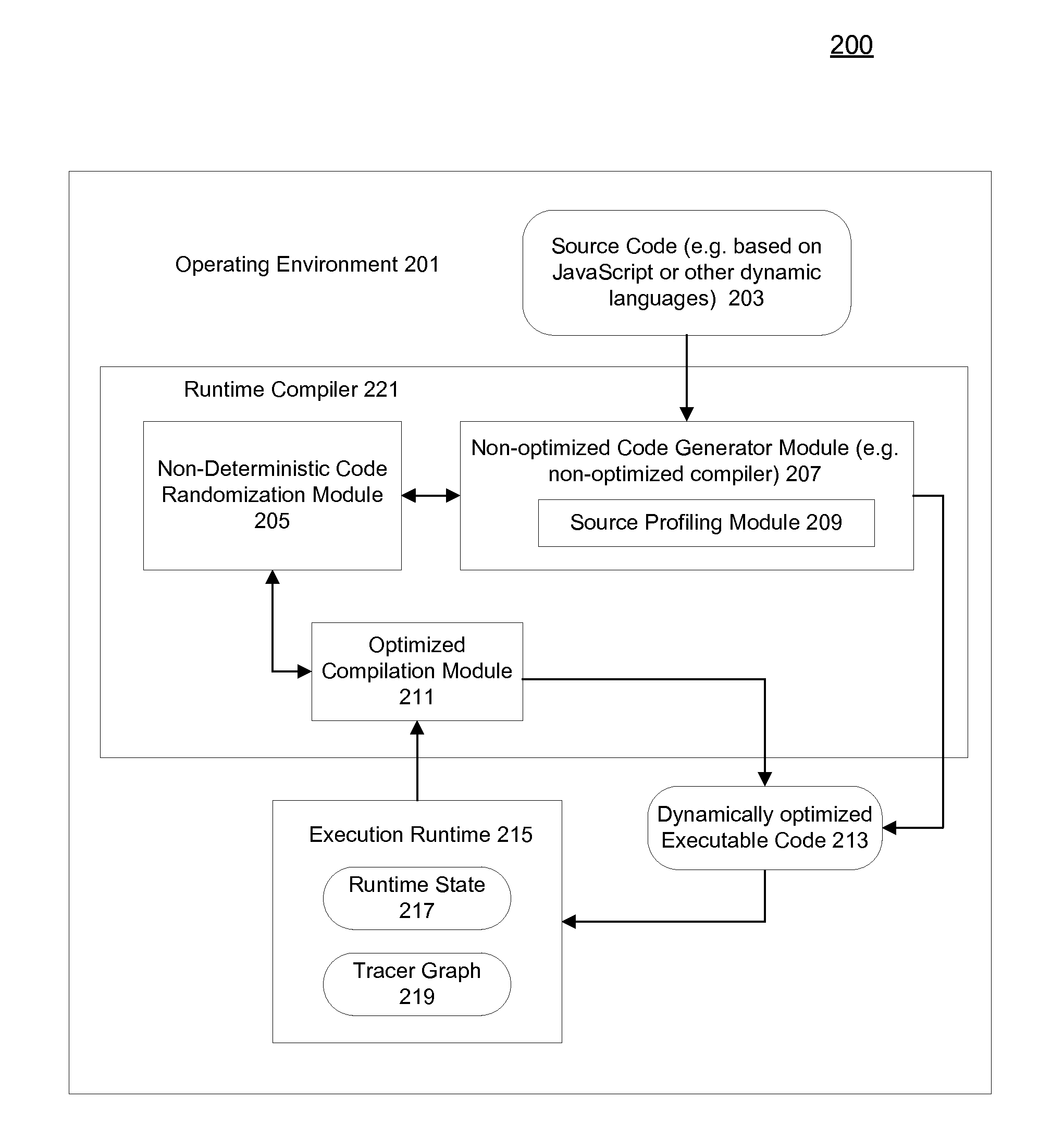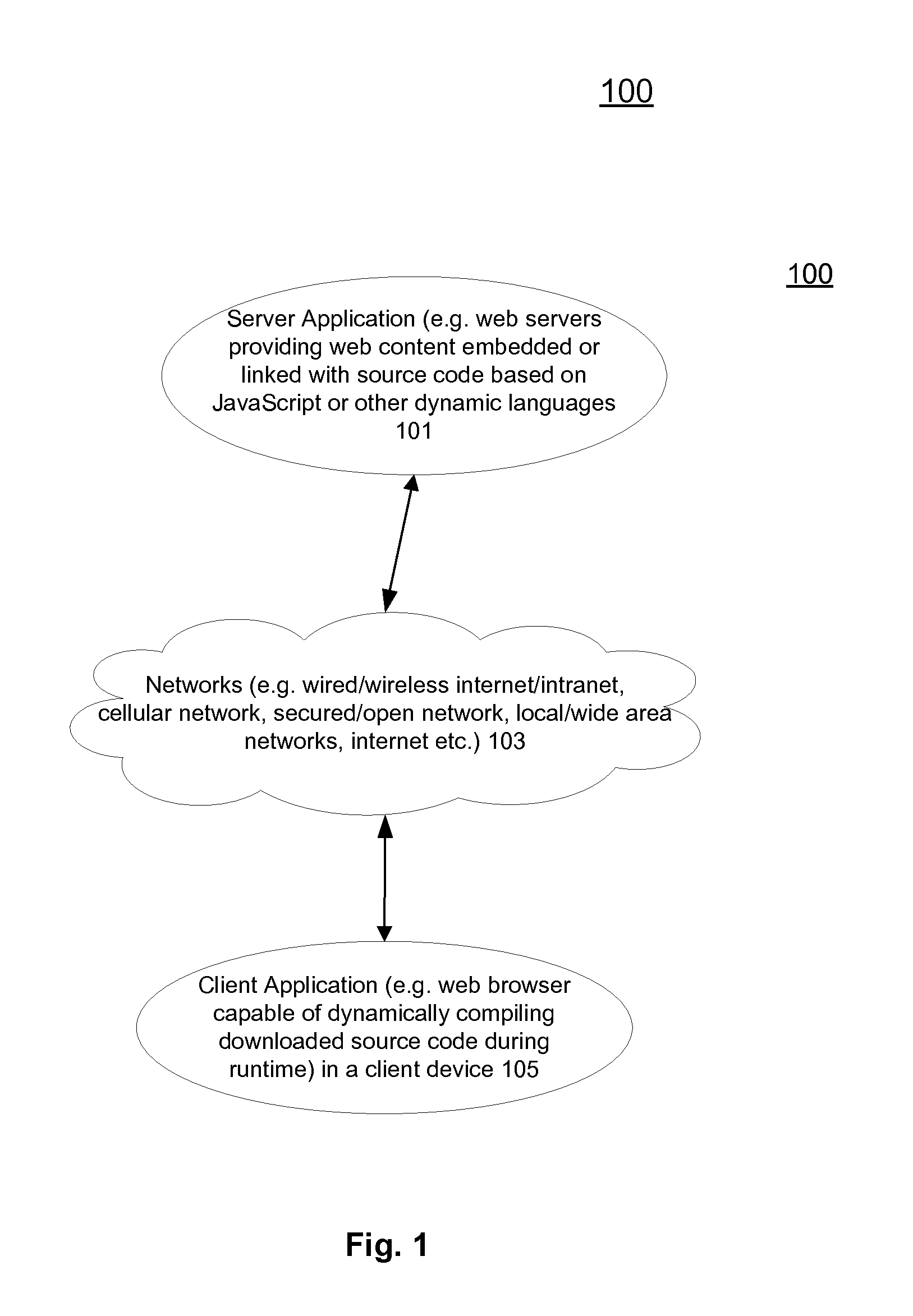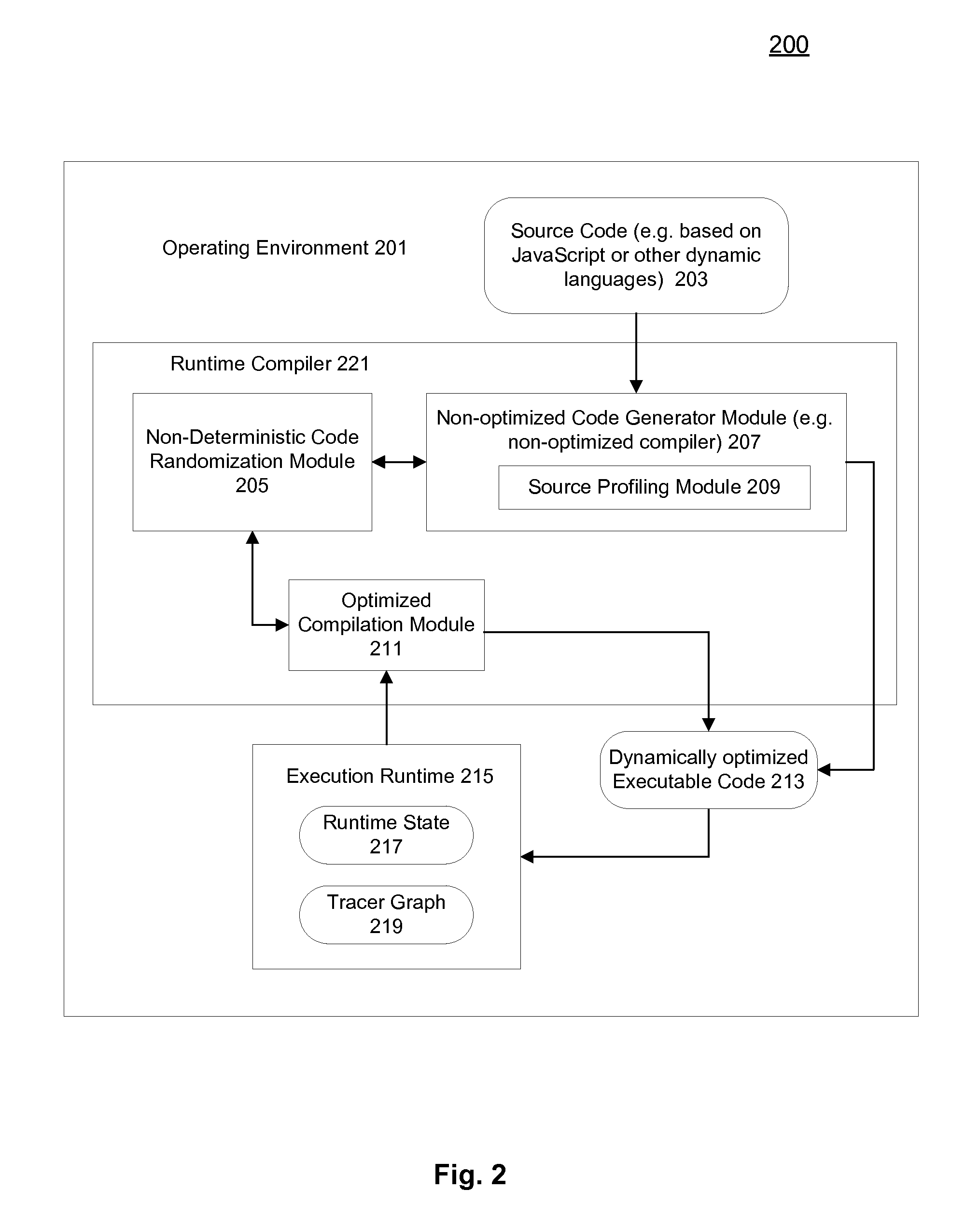Methods and apparatuses for automatic type checking via poisoned pointers
a type checking and poisoning technology, applied in the field of type checking, can solve the problems of large overhead at runtime of dynamic language based code, inability of javascript to specify the types of variables, and high computational costs of conversions, and achieve the effect of expensive calculations
- Summary
- Abstract
- Description
- Claims
- Application Information
AI Technical Summary
Benefits of technology
Problems solved by technology
Method used
Image
Examples
example 1500b
[0119]Example 1500B describes exemplary operations to selectively randomize compiled code to introduce predictability in a cost effective manner. At 1505, a heuristic measure is calculated for a proportion of un-trusted content vs. trusted content based on a total number (or bytes) of un-trusted values and a total number of trusted values currently encountered in a compiled code stream. At 1507, a random selection is performed to determine whether to apply random operations to randomize a code (or harden a value) to be emitted. In one embodiment, as the proportion of un-trusted content becomes higher, the likelihood of randomizing the code may increase. By involving a random number at 1507, the selection operation, and thus, the emitted compiled code, may become non-deterministic or unpredictable.
[0120]In some embodiments, a proportion of un-trusted code may be estimated to indicate a ratio of un-trusted code size and a total size of the code (both trusted and un-trusted) currently ...
PUM
 Login to View More
Login to View More Abstract
Description
Claims
Application Information
 Login to View More
Login to View More - R&D
- Intellectual Property
- Life Sciences
- Materials
- Tech Scout
- Unparalleled Data Quality
- Higher Quality Content
- 60% Fewer Hallucinations
Browse by: Latest US Patents, China's latest patents, Technical Efficacy Thesaurus, Application Domain, Technology Topic, Popular Technical Reports.
© 2025 PatSnap. All rights reserved.Legal|Privacy policy|Modern Slavery Act Transparency Statement|Sitemap|About US| Contact US: help@patsnap.com



